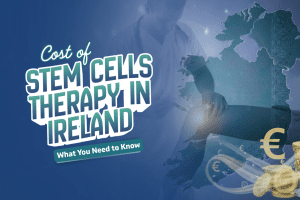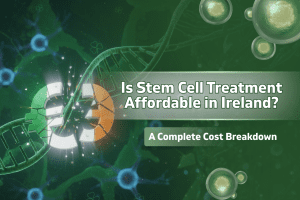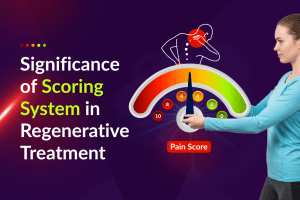
Cost of Stem Cell Therapy in Ireland – What You Need to Know
Stem cell therapy has become one of the most talked-about advances in modern regenerative medicine. From easing chronic joint pain to delaying the need for surgery,
Do you want to get rid of back pain as early as possible? At the Medica Stem Cells clinic, the treatment for lower back pain is explicitly tailored to each patient, depending on the cause and severity of their pain. Receiving timely back pain treatment in Ireland can provide effective relief from pain and reduce inflammation without the need for surgery.
Yes. It is time to get back to your active life without back surgery! Our Medica Stem Cells Clinic is here to offer comprehensive back pain treatments tailored to your needs.
Before we explore the potential back pain problems and alternative treatments for back pain surgery in Ireland, let’s first understand the anatomy and working mechanism of the back.

Vertebrae (bones of the spinal column)
1 of 3Shoulder blade
2 of 3Ribs
3 of 3
Your back muscles start from below the skull, extending across the shoulders, and run down the spine to your lower back, stopping above the hips. They attach to various bones throughout your body, including:
Back muscles are organised into three main layers:

Levator Scapulae
1 of 5Trapezius
2 of 5Rhomboids
3 of 5Latissimus dorsi
4 of 5Serratus anterior
5 of 5
These are the outermost muscles located just beneath the skin. They primarily help move your shoulders and are often what people visualise when thinking of the back.


Serratus Posterior Superior
1 of 2Serratus Posterior Inferior
2 of 2It is situated around the ribcage, which helps with rib movement and breathing.

Levator Scapulae
1 of 5Trapezius
2 of 5Rhomboids
3 of 5Latissimus dorsi
4 of 5Serratus anterior
5 of 5
It is the deepest muscle found next to the spine. It is responsible for controlling spinal movements and maintaining posture.
They consist of thousands of tiny muscle fibres that contract and stretch in order to move. These fibres are woven together like a quilt, running in different directions to support your body’s movements and stability.
Your back acts as a support to your spine, maintaining posture and helping with movement. The back muscles are always active—whether you’re sitting still or in motion—keeping your trunk stable, much like a built-in support system.
The back muscles enable actions such as bending, twisting, standing tall, and turning your head. They even help you breathe by aiding chest movement during inhalation and exhalation—automatically, without conscious effort.
Back pain treatment encompasses a range of medical interventions and strategies designed to reduce pain and discomfort in the back, following consultation with the best pain specialist in Ireland. It involves multiple steps aimed at addressing the cause of pain, managing symptoms, and improving the overall function.
Yes. We offer PRP therapy for back pain by specifically targeting the Sacroiliac (SI) joint and lumbar epidural space.
PRP therapy is an effective option for patients seeking a nonsurgical treatment for back pain. This minimally invasive, cutting-edge treatment could be the answer whether you’ve tried other treatments without success or prefer a natural approach. A consultation with our specialists will help determine if this treatment is suitable for your needs. They will give you specific guidelines to optimise your recovery and ensure the best possible outcome.
If you feel you may benefit from back pain treatment, please contact us at our London clinic on 020 8 168 2000 or our Ireland clinic on 01 298 8000 to book a consultation or request a callback today! We will review your case and assess whether you are a suitable candidate for nonsurgical treatment.

Stem cell therapy has become one of the most talked-about advances in modern regenerative medicine. From easing chronic joint pain to delaying the need for surgery,

Stem cell therapy has become one of the most talked-about advances in modern regenerative medicine. From easing chronic joint pain to delaying the need for surgery,

Regenerative medicine repairs damaged tissues, generate new cartilage, reduce inflammation, and slow down joint degeneration.

We use essential cookies to make our site work. We'd also like to set analytics cookies that help us make improvements by measuring how you use the site. Clicking Reject All only enables essential cookies. For more detailed information about the cookies we use, see our Cookies page. For further control over which cookies are set.
Thank you {{_full_name}}!
We will be in contact with you shortly.